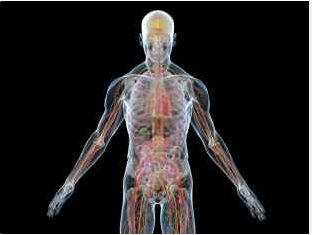

| Visitors Now: | |
| Total Visits: | |
| Total Stories: |

| Story Views | |
| Now: | |
| Last Hour: | |
| Last 24 Hours: | |
| Total: | |
Transhuman? Human Enhancement Technologies Set To Change UK Workforce
Technologies that enhance human functions such as memory, hearing and mobility could dramatically change how people work over the next decade, according to a workshop hosted by four of the UK’s national academies.

The report follows a joint workshop hosted by the Academy of Medical Sciences, the British Academy, the Royal Academy of Engineering and the Royal Society which considered cognitive enhancing drugs, bionic limbs and retinal implants among other current and emerging technologies that may revolutionize UK workplaces. The report emphasizes the immediate need for further discussion and debate around such issues as potential harm to individuals, coercion by employers and concerns related to equity and fairness.
To date, physical and cognitive enhancements have been developed primarily with the focus of restoration of function but increasingly drugs and enhancers are being used by healthy people. For example, Modafinil – a drug prescribed to treat sleep disorders has also been used to reduce impulsive behavior Researchers from Massachusetts College of Liberal Arts previously estimated that up to 16% of students in the USA use cognitive enhancers to improve performance, and that even some academics make use of enhancers to overcome jetlag and improve productivity for particularly challenging tasks.
Future advances in technology could result in a wide array of cognitive and physical enhancers being used by healthy people. For example, visual enhancement technologies, such as retinal implants, could be used in the military, for night watchmen, safety inspectors or gamekeepers. Enhanced night vision and the extension of the range of human vision to include additional wavelengths, could even come into play.
Professor Genevra Richardson CBE FBA, chair of the committee steering group for the workshop, said:
“There are a range of technologies in development and in some cases already in use that have the potential to transform our workplaces – for better or for worse.
There are a few technologies that are likely to have a big impact in a relatively short space of time but there is a lot we don’t know yet about how these advances might affect work. What is clear is that a cross disciplinary approach will be needed to get a better understanding of how best to proceed. Scientists and engineers will need to work together with social scientists, philosophers, ethicists, policy-makers and the public to ensure that the benefits are realized while the risks are minimized.”
Further cognition enhancing technologies and issues raised at the workshop and covered in the report include:
- cognitive training delivered by computer;
- non-invasive brain stimulation techniques to improve learning;
- drugs to maintain cognitive functions in the ageing workforce;
- collective cognition using computer technologies such as internet search engines and mobile mapping applications;
- bionic limbs and exoskeletons
Although design of these technologies is continuously improving, several challenges remain in creating devices that even come close to mimicking the full functionality of human limbs, including control, energy efficiency and usability.
Dr Robin Lovell-Badge FRS FMedSci, one of the chairs at the workshop, said: ”It was clear from discussions that cognitive enhancing drugs present the greatest immediate challenge for regulators and other policymakers. They are simple to take, already available without prescription, and are increasingly being used by healthy individuals. However, other forms of enhancement, including physical methods, will follow.
Enhancement technologies could change how people work. Work will evolve over the next decade, with enhancement technologies potentially making a significant contribution. Widespread use of enhancements might influence an individual’s ability to learn or perform tasks and perhaps even to enter a profession; influence motivation; enable people to work in more extreme conditions or into old age, reduce work-related illness; or facilitate earlier return to work after illness.
Empirical data are needed to guide policy. ‘Known unknowns’ need to be addressed by studies on short- and longterm impacts (both positive and negative) of enhancements on individuals with detailed consideration of social and ethical impacts using deliberative dialogue with users, potential users and wider society and the development of a market map to guide commercialisation. Continuous monitoring to inform the re-assessment of any policy or regulatory decisions is vital but will also require these underpinning data.
Policy must be informed by open dialogue. We must engage publics in open dialogue about the prospects of enhancement technologies and how they might be used at work, particularly given that use at work would affect the entire population, both those employed and not employed. Sources of input should include users of enhancements, older populations, trade unions, as well as those with expertise with novel innovations and technologies. Policy-makers and publics must be equipped to recognize circumstances in which, for example, claims around the benefits of new technologies are inflated.
The cost of technologies will be crucial. Cost and cost–benefit analysis are clearly key factors in determining who funds provision, which in turn will impact on equality and justice. Cost also drives investment decisions and will therefore be important in determining commercialization opportunities.
The availability of enhancements will be influential. Although the cost of some enhancement technologies will render them inaccessible to all but the very few, raising questions of equality and justice, other technologies such as pharmacological cognition enhancers, are already readily available through the internet—posing imminent challenges for effective regulation. Likewise, digital devices and services with the potential to influence cognition are emerging continuously with little research into the risks and benefits.
Interdisciplinary approaches will be key to moving forward. In developing new technologies, whether they are cognitive training or bionic limbs, interdisciplinary approaches will facilitate better understanding of how best to proceed. This also applies to implementation: if any enhancement is seen as valuable, scientists need to work together with social scientists, philosophers, ethicists, policy-makers and the public to discuss the ethical and moral consequences of enhancement, and thus to harness maximum benefit with minimal harm.



